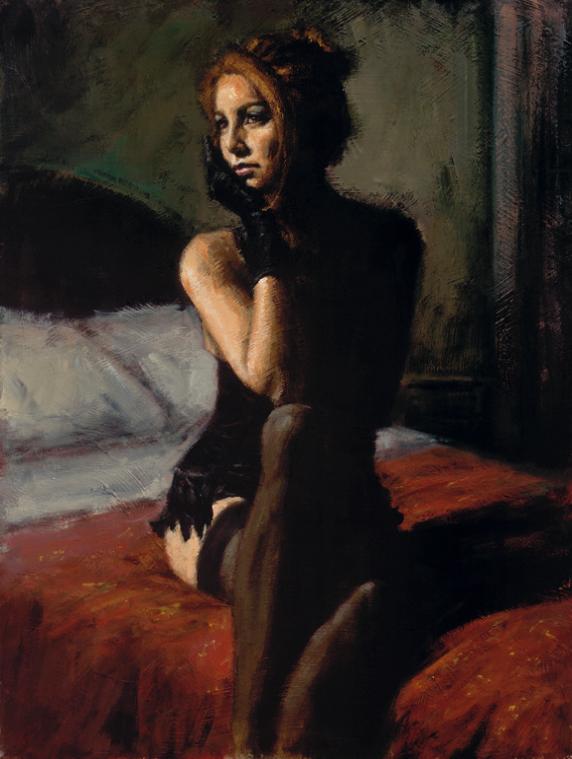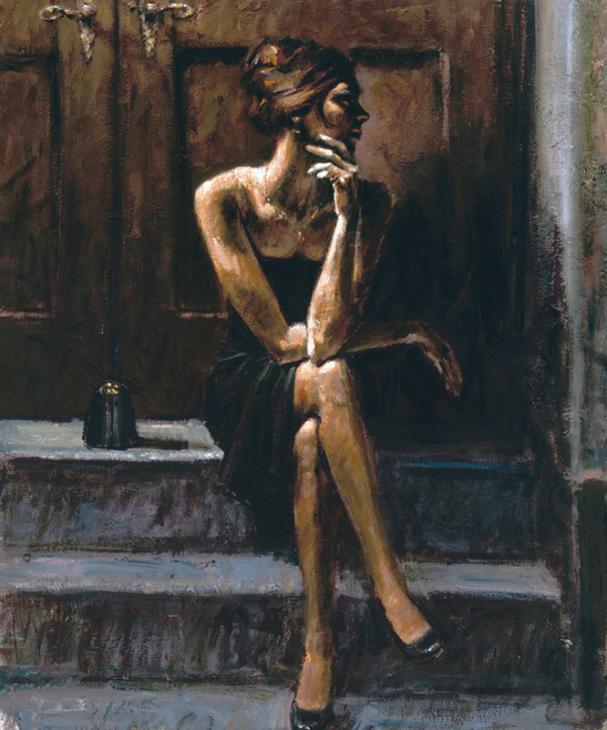

Since this is the main way prostitutes are looked at normally, it can be supposed that looking at them artistically is basically the same. However, my research of artists' intent in painting prostitutes points otherwise. Campbell Crockett paints a vivid picture to this effect, saying, "I am suggesting that talking about works of art is not at all similar to looking for missing necklaces or trying to guess the winners of next Saturday's football games. When we find the missing necklace and guess correctly that Bates will defeat Tufts, these are essentially terminating performances. But when we talk about works of art, we are not or should not be aiming at some single outcome that uniquely constitutes success" (Crockett 36). In other words, there are multiple ways that both works of art and ways they are analyzed can be viewed.
Noting this, the artwork of Fabian Perez offers such an alternate view. Though the image of a prostitute can never completely be separated from its sexualized nature, Perez's gaze goes beyond simple scopophilia (pleasure in looking) (Rose 107). Evident in his artwork is a love of gesture more than sex and passion over objectification - his personal biography describes why he enjoys using acrylic paint: "it dries quickly and allows him to follow his impulses" Therefore, in studying Perez's (and others') representations of prostitutes in art, we actually see a reverse in psychoanalysis, or perhaps a lack of it. Choosing something for an object of study in art is a much more in-depth and emotional activity than simply looking at something or someone for its/his/her own sake. All proactive artwork - painting, photography, sculpture, etc. - involves a thoughtful and oftentimes slow process of consideration that defies the subconscious, impulsive characteristics of psychoanalytic study. Therefore, the psychoanalytic study takes the viewing of prostitution in art only so far.
Another analytical view we studied was that of semiotics. Theorists Mieke Bal and Norman Bryson say that "[t]he core of semiotic theory is the definition of the factors involved in this permanent process of signmaking and interpreting and the development of conceptual tools that help us to grasp that process as it goes on in various arenas of cultural activity. Art is one such arena, and it seems obvious that semiotics has something to contribute to the study of art" (174). Noting this, we can explore the different ways prostitutes connect and appear to both artists and art enthusiasts. In conjunction to psychoanalysis, prostitutes still signify sexuality, submission, and secrecy. However, remembering how Fabian Perez grew up being fascinated by his father's lifestyle and the women in the brothels instead of simply prostitution in and of itself, these women seem to signify more to him than just sex. They are expressive and real, and this is incredibly apparent in his work.

 |
 |
 |
Art, and Influences |
and Other Artists |
and Art |
Bal, Mieke and Norman Bryson. "Semiotics and Art History." The Art Bulletin 73:2 (1991): 174-208. Print.
Crockett, Campbell. "Psychoanalysis in Art Criticism." The Journal of Aesthetics and Art Criticism 17:1 (1958): 34-44. Print.
Fabian Perez official online biography
Rose, Gillian. Visual Methodologies: An Introduction to the Interpretation of Visual Materials. 2nd Ed. Los Angeles: Sage Publications, 2007. Print.